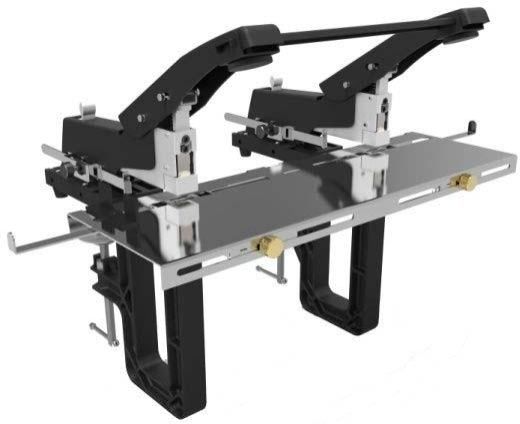

This allows a saddle stitched booklet to look and behave more like a regular book. It’s saddle-stitching with a compression process at the end which forms a square spine. Squarefold saddle-stitching goes by a few different names (Square spine, Square edge, Lay Flat) but it’s all the same. Even though they CAN do up to 200 pages you don’t want to do more than 100 pages because the books will suffer from “bowing” making the books look bad and not lay flat. Most booklet makers can only stitch together a 200 page booklet maximum and that’s with very lightweight paper. Saddle-stitching is generally the most affordable book binding method and is used for smaller booklets. A stitching machine essentially makes and cuts its own staples out of raw wire and is used for more rigorous applications like in commercial printing. Stitching uses a spool of wire, stitches a length of that wire down through the sheets of paper and back up through the other side. Stapling is taking a pre-formed piece of metal, like the staples you put in your desktop stapler, and binding pages together. There’s a technical difference between stapling and stitching. The chair back is your saddle and instead of stapling we call it stitching. Then you took a stapler and stapled the sheets together along where you folded them. Imagine you folded a bunch of paper in half hamburger style and stacked them on top of each other on a chairback. I’ll use the term booklet from now on but know that the terms are interchangeable for most purposes. Publishers print books and so they use that term. In commercial printing we say booklets because most of what we print are… well… booklets. Booklets are more reference material whereas a book is built in a way that’s meant to be read through and through or at least referenced more heavily. I think it’s better to think of it in terms of purpose. That makes more sense but is a little loose. Others say the difference is simply the number of pages books having a large amount of pages. However, there are many softcover books out there. Many say that a book is something that is bound with a hardcover. In printing we often use the term booklet instead of book and the definition difference is different depending on who you ask. If you do not have enough content, you must add blank pages.Posted on December 20, 2017, and filed under Design, Binding.įirst, let’s clarify what a book is. For example, if you are ordering 32 pages, all 32 boxes must be filled. The spine will also need a 1/8" bleed at the top and bottom.īefore you can complete your order, you must make sure all page placeholders have been completed. If youĭo not upload a print file for your spine it will be left blank.

The spine depth is calculated and displayed in the shopping cart. If you choose perfect binding you have the option to upload the spine as a separate print file. Our dynamic ordering system is smartĮnough to know when a limit has been reached, and will automatically switch to the required binding option. The opposite is true if there are too few pages for perfect binding to work. This is because there comes a point where the combined paper thickness is too much to effectively staple or stitch together,Īnd will instead need to be held together by adhesive (otherwise known as ‘perfect binding’). These available binding options are entirely dependent upon the number of pages and paper weight selected for your order. The binding options available for booklets are: saddle stitched or stapled, perfect bound, loop bound, or Wire-O bound. Please do not include any important content within this area. Your cover is made up of four pages - a front cover, an inside front cover, a back cover, and an inside back cover. You can upload your files in a way that suits you - as single pages or spreads, individual files for each page, or as a single combined file.


 0 kommentar(er)
0 kommentar(er)
